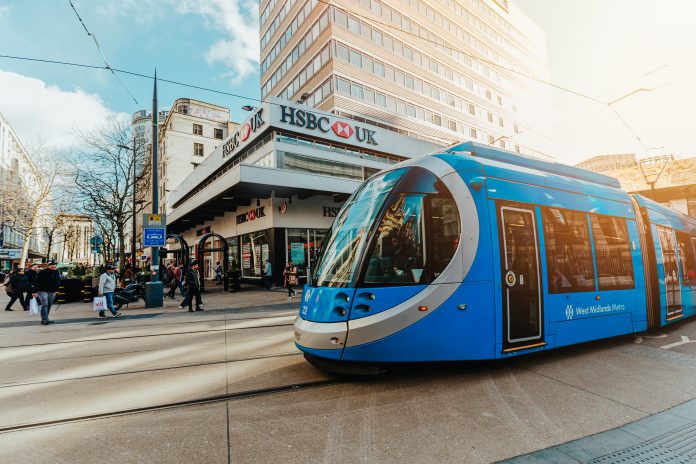Chris Holmes, Transport Programme Director at West Midlands 5G, explores how connectivity is set to unlock the future of more intelligent and intuitive transport
The return to public transport
The Coronavirus pandemic has radically changed the needs of passengers and offered transport providers a moment to reflect, reassessing the ways they currently operate and considering future challenges and opportunities.
Although the height of the first lockdown saw significant decreases across all forms of public transport and road usage plummet to levels last seen in the 1950s, we are now seeing a return to previous levels of activity.
The Department for Transport’s latest figures show that car journeys have made a full recovery to pre-pandemic levels, however, public transport has lagged behind only reaching between 50-60% of 2019 activity.
It is, therefore, paramount that confidence in public transport is rebuilt, with solutions in place that will encourage passengers to make that safe return.
To support ambitions for cleaner and more sustainable forms of transport, public transport systems must become more agile and able to cope with social distancing and crowd management.
So how does all this link back to connectivity? 5G provides significantly faster, more efficient and reliable network coverage as well as the capability to simultaneously handle data from a far greater number of devices. Cameras, sensors, and other connected smart devices will help the transport sector modernise and establish long-term solutions across all modes of transport.
Improving access by connecting public transport
In the West Midlands, and as part of the UK’s first regionwide 5G testbed, we have been innovating in the field of connected transport through an array of trials and in 2020, Birmingham welcomed the UK’s first 5G connected tram.
Although trams collect a variety of valuable information – such as CCTV footage and vehicle operational performance and maintenance data – it can only be accessed through a manual download outside the hours of operation. By bringing connectivity onboard, the trial was able to prove the concept of remote data transfers, with information transmitted while the service was in use.
This swiftly progressed into a series of further trials of innovative applications, reliant on live streaming high data rates while mobile.
These included an AI system capable of analysing anonymised CCTV footage to help improve passenger safety and accessibility. Identification of unclaimed bags, items trapped indoors, or simply letting staff know wheelchair access is required are all now feasible alerts.
New methods of marking waypoints and vehicles, combined with superfast connection to a new mobile app will also assist some of the 2 million partially sighted people in the UK to better navigate the nation’s transport networks, making confident and independent travel a reality.
Similar AI systems can analyse passenger feedback through any social groups or dedicated forums, creating alerts ranging from carriage comfort to something more serious like a passenger in distress or anti-social behaviour and ensuring a fast response.
The opportunity to collect and transfer data in real- time will ultimately help providers improve the public transport experience. Whether through engineers being able to detect defects or abnormalities on the track or vehicles and respond to faults before they occur, or operators tailoring services to meet real-time passenger demand, transport will become more agile.
Future is here
When connectivity is deployed across public transport, it will hold the key to allay passengers’ concerns around returning to public transport.
With real-time insights from within buses, on trams, or at stations, operators are able to both respond to concerns and make the journeys safer, and truly tailor services to passenger needs.
Creating better transport networks means creating better connections for communities through jobs and employment opportunities, helping local people and making businesses thrive.
5G connected smart technologies are already playing a role in making transport better and more accessible and is helping make our cities smarter, allowing more tailoring of service and interface to improve the experience.
This will be critical in aiding transport providers and passengers make a safe return to a new, more agile and personalised transport system fit for the future.
Contributor Profile
Editor's Recommended Articles
-
Must Read >> 5G and the next era of network connectivity































